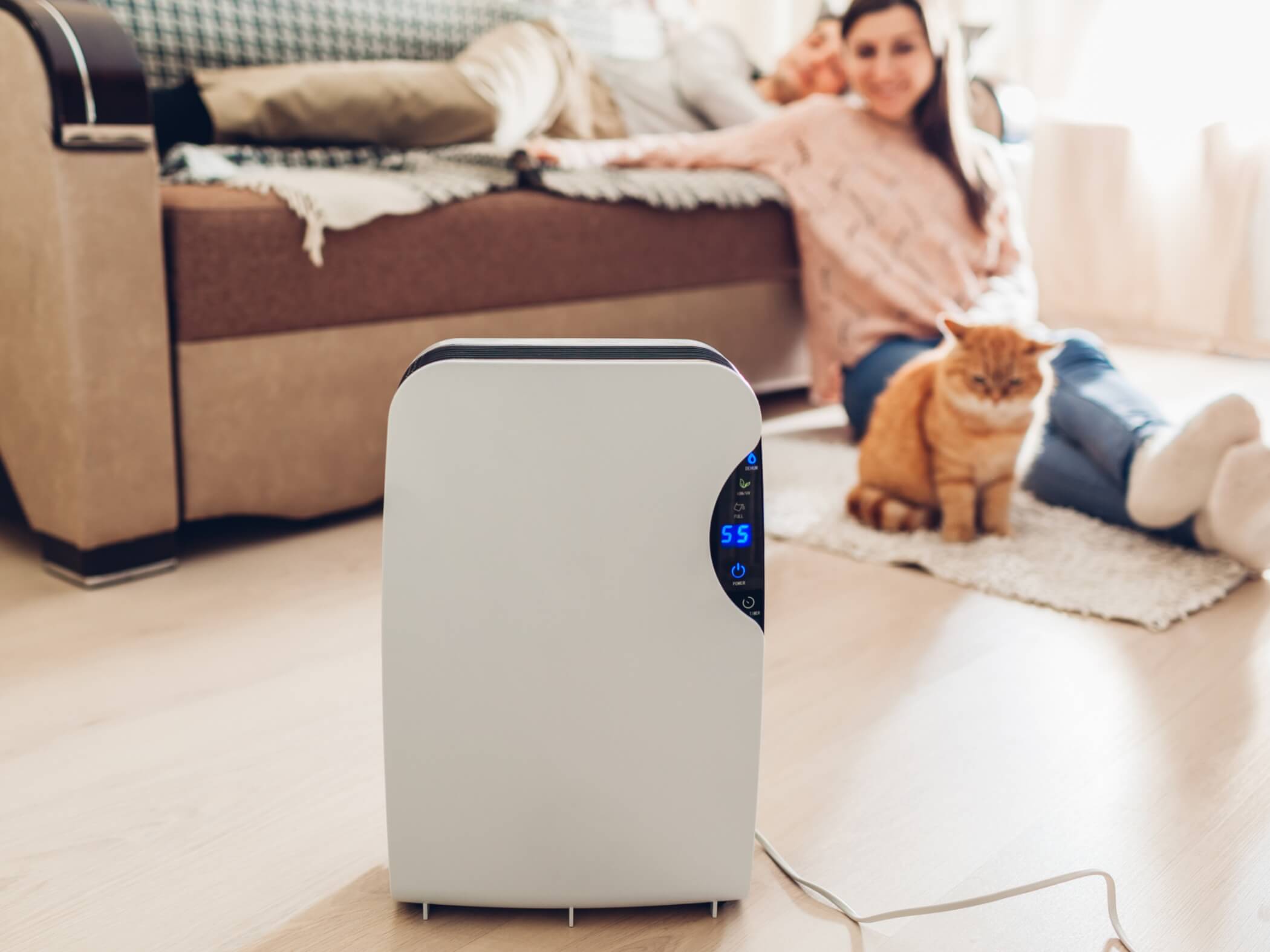5 Tips for Buying a Dehumidifier
These tips will help you find the right dehumidifier to keep your home comfortable all year long.

The humidity level of your home matters. High humidity can lead to mold, mildew, dust mites and other allergens. In addition, excess moisture in the air has the power to damage electronics, furniture, clothing and even drywall. Ideally, your home should have a humidity level between 30% and 50%.
Dehumidifiers are a great tool for removing extra moisture and preventing allergies and other health issues. Use these tips for purchasing a dehumidifier, and keep your home comfortable all year long.
1. Pinpoint the problem
Before starting your dehumidifier search, uncover the humidity issue in your home. High humidity may be affecting your entire house or just a specific space, like a basement or laundry room. Also, be sure there isn't a larger issue impacting humidity levels, such as clogged gutters, poor ventilation, leaking dryer hose or lack of weatherstripping around doors and windows.
2. Compare room size and moisture level
What's the moisture level and square footage of your space? Look for clear signs of high humidity levels, such as window condensation and damp areas on the walls or ceilings. This will help you determine what capacity dehumidifier is required. Measure the square footage of the space. For small rooms or slightly damp areas, you'll only need a small-capacity dehumidifier. For larger rooms, or those with more series moisture issues, you'll want a unit with more capacity.
3. Select the right size
Dehumidifiers come in many shapes and sizes. Most dehumidifiers are available in 30-pint, 50-pint and 70-pint capacities. This is the amount of moisture that can be removed from the air within 24 hours. For a 500-square-foot space, you'll need a compact dehumidifier with a 10-pint capacity. You'll need an extra four pints of capacity for each additional 500 square feet.
4. Look for energy efficiency
Save money on your energy bill with an ENERGY STAR®-certified dehumidifier. These energy-efficient models use about 30% less energy than standard units. In fact, you'll save around 2,800 pounds of greenhouse gas emissions over the life of the dehumidifier. Energy efficiency is based on how many liters of water are removed per kilowatt-hour of energy consumed.
5. Connect a drain hose
Most dehumidifiers collect water into a bucket that must be emptied by hand. When the bucket is full, your dehumidifier will automatically shut off. Most models, however, come with a drain outlet. To ensure continuous operation, connect a drain hose to the outlet and run it to the nearest drain. If your unit does not include a drain hose, you can purchase one as an accessory or use a standard garden hose.